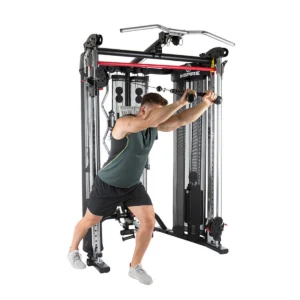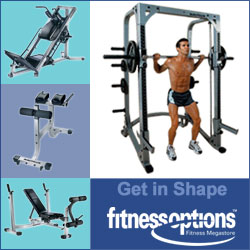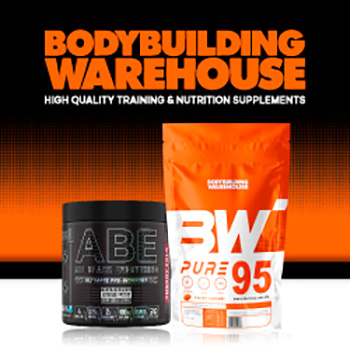Strength Training Intense Workouts

Summary
- Strength training equipment for home can improve endurance performance by enhancing muscle efficiency, delaying fatigue, and improving running economy by up to 8%
- Contrary to popular belief, heavy resistance training (80-85% 1RM) is highly effective for endurance athletes without causing excessive bulk
- Optimal strength training for endurance includes both heavy compound movements and sport specific exercises tailored to movement patterns
- Properly timed strength workouts can be integrated 2-3 times weekly without compromising endurance training
- Most endurance athletes make the mistake of using too light weights and high reps, missing the neural adaptations that improve performance
Strength Training: The Secret Weapon for Endurance
Looking to improve your performance in your next marathon or triathlon? The answer might not be what you expect, lift heavy weights. The era of endurance athletes avoiding the weight room is over. Research now consistently shows that proper strength training can significantly boost performance in running, cycling, swimming, and other endurance sports. When implemented correctly, strength training creates a foundation that allows you to generate more power with each stride, pedal stroke, or swim pull while simultaneously delaying fatigue. I’ve worked with countless endurance athletes who shaved minutes off their race times after just 8-12 weeks of structured strength training.
There’s more to it than just crossing the finish line quicker. Strength training can cut your risk of injury by as much as 50%, boost your movement economy (so you expend less energy at the same speed), and heighten your sprinting power when you need it the most at the end of the race. This isn’t about bulking up with muscles that will only slow you down it’s about building the kind of strength that directly enhances your endurance performance. So, instead of seeing strength training as an unrelated activity, think of it as the perfect complement to your endurance work.
Whether they’re Olympic medallists or weekend warriors, endurance athletes are adding intense strength training to their regimens more and more, and the proof of its effectiveness is undeniable. A meta analysis of 26 studies showed that strength training improved running economy by an average of 2-8%. That’s a margin that could be the difference between setting a personal best and hitting the wall. Fitness Magazine analysed the training of elite marathoners and found that 89% were doing regular strength work. And it wasn’t just an afterthought. It was a cornerstone of their preparation.
Why Strength Training Boosts Endurance
Endurance athletes can gain a lot from strength training. This is because it leads to mechanical and neuromuscular adaptations that improve performance. Resistance training strengthens your muscles, tendons, and ligaments. This makes your body more efficient at storing and releasing elastic energy during the stretch shortening cycle that happens with each stride or stroke. Better elastic recoil means you effectively get “free energy” with each movement. This reduces the metabolic cost of maintaining your pace.
Having stronger muscles also means that you don’t have to use as many motor units during prolonged activity. This means that you can keep your form for longer before fatigue causes your form to break down, which is often the main reason why people slow down during endurance events. Your muscles essentially have more “reserve capacity,” which means that you can keep your intensity up when it matters most.
How Building Muscle Improves Oxygen Use
strength training equipment for home leads to important changes in your slow twitch (Type I) and fast-twitch (Type IIa) muscle fibres that can directly improve your endurance performance. Regular resistance training can increase mitochondrial density this means that the cells that generate energy using oxygen become more numerous and effective. Research published in the Journal of Applied Physiology has shown that even intense strength training (80% of 1RM) can increase oxidative enzyme activity in endurance athletes, which improves the ability of their muscles to use oxygen.
When your muscles get stronger, they also develop better capillarization, which means more blood vessels are feeding your working tissues. This better vascular network delivers more oxygen and removes metabolic waste products more effectively during long exercise sessions. What this means is that each working muscle needs less oxygen to produce the same amount of force, which directly improves your endurance capacity and delays the onset of fatigue.
How Your Brain Helps You Get Stronger
“Strength training is about more than just bulking up your muscles. It’s also about training your brain to communicate better with your muscles. This is an often overlooked aspect of strength training for endurance athletes.” Dr. Andrew Coggan, Exercise Physiologist
One of the most important benefits of strength training is how it changes the way your nervous system controls your muscles. When you lift heavy weights, you improve the way your body recruits motor units. This means your body can activate more muscle fibres when it needs to, and it can coordinate the firing of these muscle fibres more efficiently. This means you can generate more force without using any more energy. In other words, you’re training your neuromuscular system to be more efficient.
A study in the European Journal of Applied Physiology showed that endurance athletes who incorporated heavy strength training twice a week increased their neural drive the electrical signal from brain to muscle by 29% compared to athletes who only did endurance training. This increase in neural efficiency means that maintaining race pace requires less mental and physical effort, conserving valuable energy for when it’s most needed in the final stages of competition. For more insights, check out this article on muscular endurance exercises.
Common Misconceptions Among Endurance Athletes
Endurance athletes often make the mistake of not giving strength training the attention it deserves. They tend to do light weights with high repetitions, which does not build strength or improve endurance. This approach overlooks the main benefits of resistance training. Scientific research has shown that moderate to heavy loads (70-85% of your one rep maximum) are necessary to cause the neural and muscular adaptations that improve endurance performance. Light weights may seem more comfortable or familiar, but they do not provide enough stimulus to change how your body functions during prolonged activity.
One more mistake that athletes often make is not including sport specific movement patterns in their strength routines. General strength programs do not take into account the specific demands of running, cycling, or swimming. For strength training to be effective for endurance, it must include exercises that mimic the biomechanics of your sport while progressively overloading the relevant muscles and movement patterns. This specificity principle ensures that the gains in strength are directly transferred to performance improvements, rather than just creating general fitness that does not translate to your sport.
A lot of endurance athletes tend to ignore strength training equipment for home during their competitive season, just when it’s most important for their performance. A study published in the International Journal of Sports Physiology and Performance revealed that a single strength workout every week during the race season can help maintain the improvements made during the off season. This helps prevent the drop in power and efficiency that often happens with endurance only training. The trick is to incorporate strength training smoothly with your endurance training, rather than treating them as conflicting priorities.
12 Dynamic Exercises That Improve Both Strength and Stamina
For endurance athletes, the best strength program is one that emphasizes multi joint compound movements that develop practical power while also imitating sport specific mechanics. These exercises engage multiple muscle groups at once, resulting in more significant neuromuscular adaptations than isolation exercises. These movements are the backbone of any successful strength endurance program, providing the most significant performance benefits with the least amount of time commitment.
When you’re doing these exercises, don’t worry about lifting the heaviest weight you can. Instead, concentrate on doing each move correctly. Start with 2-3 sets of 4-6 reps at 75-85% of your one rep max, with full recovery between sets. As your strength endurance improves, you can add more advanced variations that will further challenge your stability and power output. All of these movements should be added gradually, especially if you’re new to serious strength training.
1. Compound Lifts for Maximum Transfer
When it comes to lower body exercises for endurance athletes, the squat is unrivalled. Traditional back squats are great for developing overall leg strength, while front squats put more emphasis on the quadriceps and core stability making them particularly useful for cyclists and runners. To get the most out of your squats for endurance performance, focus on controlled eccentric (lowering) phases lasting 3-4 seconds, followed by explosive concentric movements. This will help you develop the strength needed to absorb impact forces and the power needed to generate forward propulsion during running or cycling. For more tips, check out these high-intensity strength training exercises.
Deadlifts are a great exercise for the posterior chain, which includes the hamstrings, glutes, and lower back. These muscles are crucial for stability and power in almost all endurance activities. The conventional deadlift builds overall strength, while single leg variations like the Romanian deadlift address muscle imbalances that often lead to injuries in endurance athletes. A study published in the Journal of Strength and Conditioning Research found that runners who included deadlifts in their workouts twice a week improved their running economy by 6.4% over 8 weeks, leading to better performance at all distances.
Building a strong foundation includes upper body pushing and pulling movements. Even for those who run, this upper body strength can help to prevent the forward slouch that can occur with fatigue, helping to maintain efficient biomechanics throughout your event. In my experience, I’ve found that endurance athletes who neglect to build upper body strength often experience form breakdown earlier, especially in events that last more than two hours.
2. Explosive Power Movements
Plyometric exercises act as a bridge between raw strength and sport specific power. Box jumps, depth jumps, and bound variations are all designed to train your neuromuscular system to generate the maximum force in the shortest amount of time. This is exactly what you need for powerful running strides or cycling pedal strokes. These movements enhance the elastic properties of your muscles and tendons, improving your body’s natural spring like action during endurance activities. A study in the International Journal of Sports Physiology showed that runners who added just 20 minutes of plyometrics weekly improved their 5K times by an average of 3.1%.
Exercises such as power cleans, hang cleans, and push presses, which are variations of Olympic lifting, help to build explosive triple extension. This involves extending the ankles, knees, and hips all at once, which is the same movement pattern that is used in running and cycling. These complex movements need the right coaching but the benefits they offer in terms of building power that can be directly transferred to endurance performance are unrivalled. Even if you use lighter weights and modify the exercises, you can still dramatically improve your ability to surge during races or power up inclines efficiently.
3. Strength Exercises Specific to Your Sport
- Step-ups with overhead press (for running, hiking, stair climbing events)
- Single leg Romanian deadlifts (for running stability, preventing hamstring injuries)
- Walking lunges with rotation (for trail running, obstacle course racing)
- Medicine ball throws (for swimming power, running arm drive)
- Split squats with rear foot elevated (for cycling power, increasing running stride length)
- Heavy sled pushes, pulls (for improving running mechanics under fatigue)
4. Functional Training for Your Core
Core stability is the foundation of efficient movement in any endurance sport. Anti rotation exercises like Pallor presses and plank variations prevent energy from leaking during prolonged activity. This ensures that power is transferred effectively with each stride or stroke. The most effective core training for endurance athletes focuses on resisting movement rather than creating it. This means holding your trunk stable while your extremities work. Research from the British Journal of Sports Medicine shows that endurance athletes with superior core stability maintain proper form longer under fatigue. This significantly improves economy of movement.
Loaded carries like farmer’s carries and suitcase carries build what I like to call “endurance strength”, or the ability to maintain correct posture and mechanics under a load over a period of time. These exercises are great for building core and grip strength and challenging your cardiovascular system. Incorporating heavy carries for distances of 25-50 yards in between strength sets gives a metabolic conditioning effect that gets your body ready for the demands of late race fatigue when form usually starts to break down. This integrated approach builds both strength and stamina at the same time.
How Much Weight Should You Be Lifting?
Many endurance athletes believe that lifting light weights with high repetitions is the most effective way to improve endurance performance. However, research suggests otherwise. Several studies have shown that lifting heavier weights (70-85% of 1RM) with fewer repetitions (4-6 per set) is actually more beneficial for improving endurance performance. This method allows for the greatest neural adaptations and strength development, without causing too much muscle hypertrophy, which could negatively affect performance.
It’s not about how much weight you lift, but how intensely you lift relative to your maximum, and the purpose of each rep. Each rep should be done with the goal of explosive intent lifting the weight as powerfully as you can even if the actual speed of the bar is moderate. This helps build your rate of force development, a key factor in endurance performance that determines how quickly you can generate power with each stride or stroke.
Endurance Training: Heavy Weights vs. Moderate Weights
A study at the University of Eastern Finland compared endurance runners who lifted heavy weights (85-90% of their one rep max, for 4-6 reps) with those who lifted moderate weights (60-65% of their one rep max, for 12-15 reps). After eight weeks, the runners who lifted heavy weights improved their running economy by 8.1%, while those who lifted moderate weights improved by just 3.7%. The heavy lifters also increased their maximum strength by 33.9%, compared to a 16.2% increase in the moderate group. These results have been confirmed by several other studies in different endurance sports.
The reason for this lies in the specific changes each type of training brings about in your body. Heavy strength training primarily builds Type IIa muscle fibres and improves neural drive, both of which are key to maintaining power output during long endurance events. It also strengthens tendons and connective tissues, which improves the amount of elastic energy that’s returned with each foot strike or pedal stroke. Moderate weight training, while better than no strength training equipment for home at all, simply doesn’t bring about the same level of beneficial changes for endurance performance.
Rep Ranges That Build Both Strength and Stamina
To maximize endurance gains, focus on 3-5 sets of 3-6 repetitions at 80-85% of your one rep maximum for primary compound movements. This intensity range creates the neural adaptations and rate of force development improvements that directly transfer to endurance performance. For accessory exercises, you can incorporate moderate rep ranges (8-12) to build specific muscular endurance in stabilizer muscles. Always focus on quality over quantity when form begins to deteriorate, the set should end regardless of target repetitions.
Studies have shown that a periodization approach is most effective. This approach involves progressing from initial strength endurance phases (8-12 reps at 65-70% 1RM) during the early season to maximum strength phases (3-6 reps at 80-85% 1RM) during mid training blocks. Then, as competition approaches, you should move on to power and maintenance phases (3-5 reps with explosive intent). This structured progression ensures continuous adaptation without overtraining. The Journal of Strength and Conditioning Research found that this periodization approach improved endurance performance markers by 15% compared to constant-intensity strength training protocols.
Rest Periods That Increase Cardiovascular Benefits
Rest periods should be adjusted according to your training objectives for each phase when strength training for endurance. During phases of pure strength development, allow full recovery between sets (2-3 minutes) to maximize force production on subsequent sets. As you approach competition, you can include shorter rest periods (60-90 seconds) to increase cardiovascular demand while still maintaining enough quality to develop strength.
During specific training phases, circuit training formats, which involve moving from one exercise to another with little rest, can be a great way to build strength endurance. However, these methods should be used to supplement traditional strength training with suitable rest periods, not replace them. This combined approach helps to develop both maximum strength and the ability to use that strength when metabolically fatigued exactly what endurance athletes need during a race. In my experience, alternating between traditional strength sessions and circuit format sessions in the same week yields great results for endurance athletes who are short on time.
Creating Your 8-Week Strength Endurance Program
For endurance athletes, the best strength program is one that progresses logically from general strength building to sport specific power applications. This eight week template can be adapted to suit various endurance sports and experience levels, laying the groundwork for substantial performance gains. The secret to success is in the right periodization systematically changing training volume and intensity to stimulate continuous adaptation without overtraining.
Stage 1: Laying the Groundwork (Weeks 1-2)
Start off with two full body workouts per week, concentrating on form and establishing a base level of strength. Each session should incorporate one main lower body push (a variation of a squat), one lower body pull (a variation of a deadlift), one upper body push, one upper body pull, and core exercises. Use moderate weights (65-70% of your one rep max) for 8-10 reps to improve your movement skills and tendon strength. Take a 90-second break between sets and prioritize flawless form over lifting the heaviest weight possible. This initial stage gets your muscles, tendons, and nervous system ready for the heavier weights that are coming.
Phase 2: Building Power (Weeks 3-5)
Move on to heavier weights (75-80% 1RM) and fewer reps (5-6 per set) while keeping the same exercises. Add one explosive movement (like a jump variation or medicine ball throw) at the start of each workout to improve power. Increase rest periods to 2 minutes between sets to keep the quality high. In this phase, you’re building the maximum strength that will serve as the basis for power and endurance. If you’re also doing high volume endurance training, limit strength sessions to two per week with at least 48 hours between sessions.
Phase 3: Sport Specific Integration (Weeks 6-8)
In this last phase, keep the heavy compound movements, but add exercises that directly mimic the movement patterns of your endurance activity. Runners should include single leg work like Bulgarian split squats, cyclists will benefit from step-ups and lunges, swimmers should focus on upper body pulling and rotational core work. Continue with heavier loads (80-85% 1RM) for 3-5 repetitions on primary movements, focusing on explosive intent with each repetition. During this phase, the transfer of strength to endurance performance becomes most apparent as you integrate sport-specific movement patterns under load.
Integrating Strength Training Into Your Existing Program
For strength training equipment for home to be successfully integrated into your endurance program, it must be strategically scheduled to maximize the performance benefits and minimize recovery conflicts. The most effective method is to schedule strength workouts on the same days as hard endurance sessions (with a few hours in between) rather than on designated recovery days. This allows hard training days to be consolidated and for complete recovery on easy days, optimizing adaptation and reducing overall fatigue.
Examples of Ideal Weekly Schedules
| Day | Schedule for Runners | Schedule for Cyclists |
|---|---|---|
| Monday | AM: Easy recovery run PM: Full-body strength |
AM: Strength training PM: Technique/skills work |
| Tuesday | AM: Interval/speed session PM: Rest |
AM: High-intensity intervals PM: Rest |
| Wednesday | AM: Easy/moderate run PM: Rest |
AM: Active recovery ride PM: Core strength |
| Thursday | AM: Tempo/threshold run PM: Full-body strength |
AM: Strength training PM: Tempo/sweet spot |
| Friday | Complete rest or active recovery | Complete rest or active recovery |
| Saturday | Long run (no strength) | Long ride (no strength) |
| Sunday | Active recovery or light cross-training | Active recovery or light cross-training |
Recovery Techniques Between Workouts
When you’re combining strength and endurance training, effective recovery is key. Make sure you’re getting good quality sleep and enough of it, aim for 7-9 hours a night, as this is when most of your body’s repair work happens. The timing of your nutrition is also important: try to consume 20-30g of high-quality protein within 30 minutes after your workouts, along with some carbohydrates to replenish your glycogen stores. On your rest days, try some active recovery techniques like light swimming, cycling, or walking to get your blood flowing without adding to your training stress. Compression garments, contrast therapy (alternating hot and cold), and foam rolling can also help enhance your recovery between tough sessions.
When to Eat for Combined Training
When you’re doing both strength and endurance training, eating right is even more important. You should eat lots of carbs before endurance workouts and on days when you’re training a lot (5-8g per kg of bodyweight). You also need to eat enough protein (1.6-2.0g per kg of bodyweight daily) to help your muscles recover and adapt. When you eat is important too, you should eat some protein and carbs within 30 minutes after your workout to start recovering, and then eat a full meal within 2 hours. On days when you’re doing both strength and endurance workouts, you should eat 20-30% more calories than on days when you’re only doing one workout. Make sure to eat enough carbs between workouts.
Adapting Workouts to Specific Sports
For Runners: Concentrate on the Lower Body
Runners gain the most from unilateral (single leg) workouts, which address the inherent imbalances that arise from thousands of repetitive steps. Bulgarian split squats, single leg Romanian deadlifts, and step ups closely mimic running mechanics while increasing strength in sport specific movement patterns. Heavy loaded carries develop the core and upper back strength needed to maintain proper posture during the later stages of long runs or races. The most effective running specific strength programs emphasize the posterior chain (hamstrings, glutes, lower back) to counterbalance the quad dominant nature of running, particularly downhill sections that often cause muscle damage in races.
Quad Hamstring Balance for Cyclists
For cyclists, it is crucial to build an impressive amount of quadriceps strength, but not to the detriment of the posterior chain that helps stabilize pedalling. Front squats, leg presses, and step-ups with heavy loads are great for building the quad strength needed for climbing and accelerations. However, you should also focus on developing your hamstrings and glutes through Romanian deadlifts and hip thrusts to avoid the common muscle imbalances that cause knee and back problems in cyclists. According to a study in the Journal of Strength and Conditioning Research, cyclists who added strength training twice a week focusing on this balance improved their 40km time trial performance by 8.4% after only 8 weeks of training.
For Swimmers: Building Strength in the Upper Body
Swimmers need a combination of outstanding upper body strength and core stability to keep their technique efficient through all phases of a race. Exercises like pull-ups, pulldowns and cable rows help to build up the back and latissimus dorsa muscles that are responsible for propulsion in freestyle, butterfly, and backstroke. Strengthening the rotator cuff through exercises that involve internal and external rotation can help to prevent the shoulder injuries that are common in high volume swimming. Medicine ball throws especially the rotational variations can help to build the explosive power that is needed for starts and turns. The most effective strength programs for swimming also include a lot of core anti rotation work to build the trunk stability that is necessary to maintain body position in the water.
Monitoring Your Progress: More Than Just Lifting Weights
Successful strength training equipment for home for endurance involves monitoring various factors beyond just the weight you’re lifting. While it’s still important to gradually increase the weight you’re lifting, endurance athletes should also pay equal attention to the quality of their movements, their rate of force development, and how their strength gains are translating to their sport performance. Keep a thorough training log that not only tracks your strength numbers but also how you feel during your endurance workouts that follow. Look for patterns between your strength gains and performance measures like your running speed, cycling power, or swimming splits to figure out which exercises are having the most impact on your individual physiology.
Endurance Indicators to Keep an Eye On
The real test of the effectiveness of strength training is seen in the enhancement of endurance performance, not just in gym statistics. Keep an eye on sport specific indicators such as running economy (oxygen expense at submaximal speeds), cycling power at lactate threshold, or swimming stroke efficiency to determine how strength gains are translating to performance. Many athletes find that improvements in strength first manifest as a decrease in perceived exertion at regular training speeds, followed by measurable performance enhancements several weeks later. The use of technologies such as power meters for running or cycling, or stroke counting for swimming, provides objective data to assess this transfer effect. The most revealing indicator is often the ability to retain performance in the later stages of workouts or races, which is when fatigue typically causes deterioration.
Strength Goals for Endurance Athletes
While everyone’s goals are different, there are certain strength goals that can help improve endurance performance across a variety of sports. For runners, a good goal to aim for is being able to back squat 1.5 times your bodyweight and deadlift twice your bodyweight for males (with proportional adjustments for females) to ensure you have enough lower body strength for optimal performance. Cyclists should aim for similar lower body goals, but also add sport specific measures like sustained power during single leg press. Swimmers will benefit from upper body goals like being able to do bodyweight pull-ups (8-12 repetitions for males, 4-8 for females) and overhead pressing strength equivalent to 50-75% of bodyweight. Keep in mind these are general targets individual biomechanics and sport demands may mean you need to adjust these recommendations.
Begin with Intensity, Finish with Power
Adding a well structured strength training routine to your workout regimen is one of the most effective ways to enhance your endurance performance. The evidence is undeniable, well planned resistance training enhances virtually every physiological factor that limits endurance from running efficiency and power output to resistance to fatigue and injury prevention. By concentrating on heavy compound movements, explosive power development, and sport specific exercises, you lay a physiological groundwork that promotes both immediate performance improvements and long term athletic development. The most accomplished endurance athletes now view strength training not as supplementary but as a crucial part of their overall regimen.
Start with the basic rules outlined in this article, prioritize heavy compound movements, focus on quality of movement over quantity, structure your training to complement rather than compete with endurance work, and track metrics that matter for your sport. Remember that consistency is more important than perfection two well executed strength sessions a week will yield better long term results than sporadically trying more complex programs. As Olympic coach Vern Gambetta often says, “strength training equipment for home doesn’t make you a better runner, cyclist, or swimmer it makes you a better athlete who can then apply that athleticism to your sport.” Start your strength journey today, and watch your endurance performance soar.
Looking to up your fitness game? Our fitness equipment is just what you need. Say goodbye to generic workouts and hello to a equipment that’s tailored to your unique goals and needs. With our guidance, you’ll be amazed at what you can achieve. Click Here to discover the power of personalized fitness.






